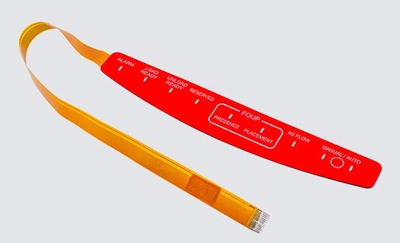
In electronic circuits, non-locking pushbutton switches are widely used. Because it does not require a large current, its shape and size are usually small, often referred to as tactile switches or micro switches. Mouse buttons and phone keyboards are typical examples of non-locking pushbutton switches. Modern electronic devices and instruments generally have human-machine interaction functions, and touch buttons are one of the main components of human-machine interaction. The system can determine how to respond appropriately by obtaining information from the user's touch of the button, including the system state when touched, the number of touches, the length of touch time, and which key was touched.
In the development of human-machine interaction interfaces, a technology called membrane switch panels has replaced tactile switches in many situations. The membrane switch panel can embed multiple metal contact points into a thin film panel composed of multiple layers of film according to the user's requirements, and uses printing to generate metal wires and connect the metal contact points to external connection terminals through FPC connections. The membrane switch panel has a small touch and can simultaneously realize multiple buttons. It simplifies the panel's mechanical design while being aesthetically pleasing. In addition, it also has certain waterproof performance, which is welcomed by many users. However, since the membrane switch panel needs to be customized, its production process is complex, resulting in high cost. At the same time, the mechanical contact points of the panel have limitations, which also restrict its application.
The film is very important for membrane switches and membrane switch panels. When selecting materials, special attention is required for the film. So, what are the characteristics of the film when customizing the membrane switch panel?
The panel layer is the surface layer of the membrane switch exposed to the natural environment. The panel material should be able to avoid deformation, cracking, aging, and discoloration under certain natural environmental conditions.
The membrane switch panel, for example, backlit membrane switch panel, requires that the panel made has no significant changes in dimensions within a certain temperature range (generally -40℃~55℃).
The thin panel layer requires a certain weak performance. At the same time, the elastic deformation of the membrane switch should be small, which can be judged by the elongation of the material.
Refers to the panel's coating surface being smooth, the gloss being uniform, and there being no surface defects such as mechanical damage, scratches, inclusions, or color spots.
The panel layer may come into contact with different chemicals, but for most common chemicals, such as alcohols, ethers, and mineral oils, it should have a certain tolerance.